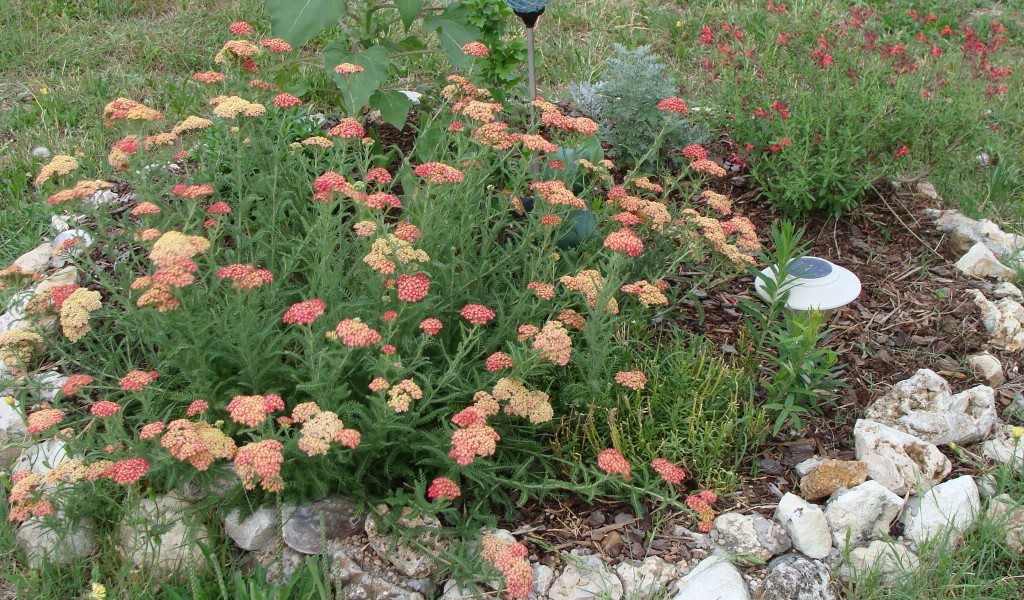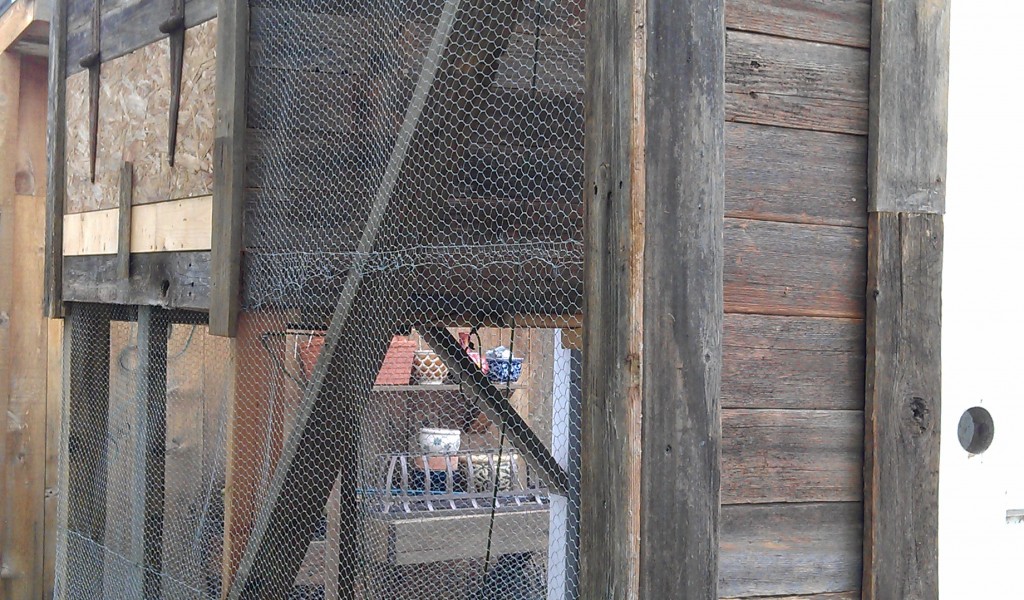Lady Bug Life

Well it’s Friday. Another week nearing completion. It’s a mighty windy day. The chickens are dodging one another in the shadows and drift ever so slightly. That’s yarrow growing in my first butterfly garden bed. It’s an excellent choice for encouraging beneficial insects to your yard. Flame acanthus, butterfly weed, candytuft, and sunflower are in the picture too.
I’ve been playing a lot of music the past two days. Rewriting old songs to make them better. Playing favorite songs of my favorite artist of all time, Tom Petty. I love all music and have so many favorites and influences but Petty stole my heart from a very young age. I started really listening to him when I was eleven. The most favorite collection that I’ve aquired of Tom Petty and The Heartbreakers is the Playback album. The whole band is a masterpiece. The sound on each album is completely transformational at times sounding like the Grateful Dead and even Bob Dylan. If you are a fan, you must get your hands on it. It’s my fave!
Getting ready to finish planting more in the garden beds. I’ve been pulling out all the giant weeds and have found oodles of lady bug nests on a variety of weeds. We are letting our front lawn overgrow with yellow clover. It naturally amends the soil and the chickens love it! I’ve been landscaping back via lasagna gardening style because it seems the most convenient for now. Basically transplanting my cherry bushes and some other perennials with some compost, dirt, humate, kelp, mixture, cardboard, and pine woodchips. The county gives us access to free wood chipsbut we haven’t gotten any yet. We plan to minimize mowing by xeriscaping some areas, while also allowing the clay underneath to decompose into magical dirt by next year. If we weren’t in such a drought stricken region we could turn the soil sooner. Hopefully by next winter we will be able to grow other cover crops and a variety of whole grains.

Lady Bug Transformation
Look for ladybugs and larvae on your weeds. They love to eat aphids and other things on them. Also, check out what the larvae look like so that you don’t harm them during their precious development stage. They look similar to other insect eggs which can make it difficult. Make sure they are in a cluster like this. I found an awesome pic from Helen M.Roman, to show you what to look for from start to finish. Pretty amazing. Now you know who the good guys are! Keep them in your gardens, and wait before you mow too soon. These beetles need all the help they can get. They are one of the best beneficial insects you can have!
Spring Projects

Happy Spring!
For us spring=crazy projects outdoors. This is because it’s simply too hot in the summer to be motivated outside and if we are working on projects when it’s hot out, you’ll find the shop lights on in the dark because it’s relatively cooler. This year we aren’t building any new garden beds for the first time ever however we are tweaking our current systems and have even converted a couple of our existing garden beds which reduces our radius for gardening. To make up for the loss we have relocated one of our raised garden beds to one that I had made out of pavers which gives us a little more height. But, our 1st garden bed became the Greenhouse Chicken Coop, and the other is going to be for rainwater collection.
So I’ve relocated the canas into more native land outback and near the compost pile. Those things spread like crazy and were taking over the herb garden. I’ll be planting potatoes in their place and have also planted an artichoke and two raspberry bushes late winter. Texas weather has been strange as you can imagine; cold, warm, hot, cold, warm, spring weather with frosts still in February-March. I was able to clean up all of the beds, transplant existing plants to new locations to make space for other arrivals and such. I planted frost hardy perennials in the new bed I did by the street. I always try to perfect our landscaped native areas, which I don’t think is one of my strong suits at all. None the less, I try. Maybe one day I’ll be more skilled at it. Davin leaves this work to me. He does more of the building projects. Although I have to do my share of digging of which I’m not a fan.
CHICKENS
We have received our 10 pullet organically raised chickens from Blue Star Ranch. We are pleased to tell you we have:
-
2 Ameraucanas(Easter egg layers-blue)
-
4 Naked Neck(2 black, 2 golden-large brown eggs)
-
2 Australorps(brown eggs)
-
2 Plymouth Barred Rocks(brown eggs)
We choose these varieties based on a few reasons. They are great foragers, dual breeds(great for egg laying and meat production), some are more heat tolerant and more resistant to disease(Naked Neck), relatively quiet, produce well, friendly. That being said, I know that each bird is unique. We had some pecking order issues after the first few days with one of the Naked Necks getting pecked in the tail but got right on it and used Peck-Me-Not that we got from TSC which helped right away. They are 9 weeks old; we got them at 8 weeks. They shouldn’t start laying for at least a couple more months. We also got some of the chicken compost with the chicken to transport into their current habitat to reduce environmental concerns, and promote health. We also will continue to spray the coop with probiotics daily for another month at least and on a weekly basis thereafter. The use of probiotics encourages a healthier life for the chickens and the environment they live in.
Davin finished the pin just in time and has recently built a tractor for them while they free range in the yard. We’ve been able to feed them yellow clover which they love, btw, from our front lawn. Our non certified organic chickens diet consists of:
-
local organic pullet developer from Coyote Creek Farms
-
rainwater with vinegar and probiotics
-
fresh greens from our gardens
-
bugs
-
oyster shells
-
yellow clover from our yard
-
cleavers from our yard
-
free range
 Late Bloom America
Late Bloom America

